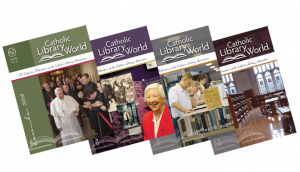Publication analysis
About the publication
Title: Canadian Law Library Review/Revue canadienne des bibliothèques de droit
ISSN: 1180-176X
Website: https://callacbd.ca/Publications
Purpose, objective, or mission: CLLR is the official journal of the Canadian Association of Law Libraries/Association de bibliothèques de droit (CALL/ACBD), and publishes news, developments, articles, reports and reviews of interest to its members.
Target audience: Law librarians and other law library staff, primarily in Canada.
Publisher: Canadian Association of Law Libraries/Association de bibliothèques de droit. This is the national association for Canadian law libraries and law librarians.
Peer reviewed? Articles may be peer-reviewed by the request of the author.
Type: Scholarly1 and professional.2
Medium: Online. Formerly in print (until 2015).3
Content: Topics have included training and instruction programs in Canadian law libraries; current events and/or legislation as they pertain to Canadian law libraries or librarians; collection development; and legal research tools and technologies (e.g. artificial intelligence). While submissions may be made in either English or French, the majority of submissions are in English. The Editor’s and President’s messages are published in full in both English and French; the abstracts of featured articles are published in both English and French, while the full text of the article is presented in the language in which it was submitted.
Frequency of publication: Three times annually (March, July, and November).
About the publication’s submission guidelines
Location of submission guidelines: https://www.callacbd.ca/Publications. See also the style guide.
Types of contributions accepted: Articles, reports and book reviews. Bibliographic information on relevant publications (especially government documents and material not widely publicized) is requested. Contributions may be from members or non-members of CALL/ACBD, and from library staff in any kind of library, so long as the content is relevant to the law library field. Submissions may be in either English or French.
Submission and review process: Submissions are accepted and reviewed on a rolling basis. All articles are subject to review, and editors may recommend revisions. Article may receive peer review if requested by the author. Authors receive no payment for publications, nor are they required to pay any fees as part of the submission, review, or publication process.
Editorial tone: Scholarly, but may also be conversational.
Style guide used: CLLR uses the Canadian Uniform Guide to Legal Citation (“the McGill Guide”). The Canadian Style: A Guide to Writing and Editing may be used as support.4
Conclusion: Evaluation of publication’s potential for LIS authors
CLLR is an excellent choice for students or recent graduates of LIS programs who have done coursework in legal librarianship or who are working in law libraries. Legal professionals (lawyers, judges, paralegals or law clerks, law students) may also be interested in writing for this journal. The subject matter covered is specialized, but relevancy to those working outside law libraries is often evident in the books reviewed and featured articles published, which often touch on topics outside a narrow definition of legal librarianship. The publication’s bilingual policy may encourage francophone Canadian authors to submit more broadly outside of unilingual French library journals. Authors interested in Canadian law and legal research, and/or social issues in Canada with a legal aspect, will find CLLR an excellent open-access option for publication.
Audience analysis
About the publication’s readers
Publication circulation: CLLR circulates to 475 members of CALL/ACBD. Indexed in the Index to Canadian Legal Literature, Index to Canadian Legal Periodical Literature, Legal Information and Management Index, Index to Canadian Periodical Literature, Library and Information Science Abstracts, HeinOnline5, CanLII6, EBSCOhost, and GALE7.
Audience location and language or cultural considerations: The audience is primarily Canadian, though issues discussed may also be relevant to readers in the United States, Australia, New Zealand, and the United Kingdom. As submissions may be made in either English or French, it can be assumed that some segment of the readership is francophone.
Reader characteristics: Most readers are librarians or other library staff working in law libraries—either academic, government, or corporate—and engaged in current awareness of issues in Canadian law. There is no official political stance taken by the journal, but featured articles with a progressive slant have been published; total neutrality is not required of authors nor expected of readers.
Knowledge of LIS subject matter: Cultural and social issues with legal ramifications are of interest to readers. Pedagogy and research methodologies are also of interest for librarians engaged in teaching legal research skills to law students, whether they work in law schools or in law firms. Readers will generally have an understanding of legal and LIS terminology alike.
Conclusion: Analysis of reader characteristics and their potential impact on authors
CLLR‘s readership are largely law library professionals who keep abreast of developments in Canadian law and best practices in librarianship. Most articles and reviews are written in a relatively accessible tone, but readers expect articles to display a thorough understanding of the legal system in Canada.
Last updated: November 15, 2022

